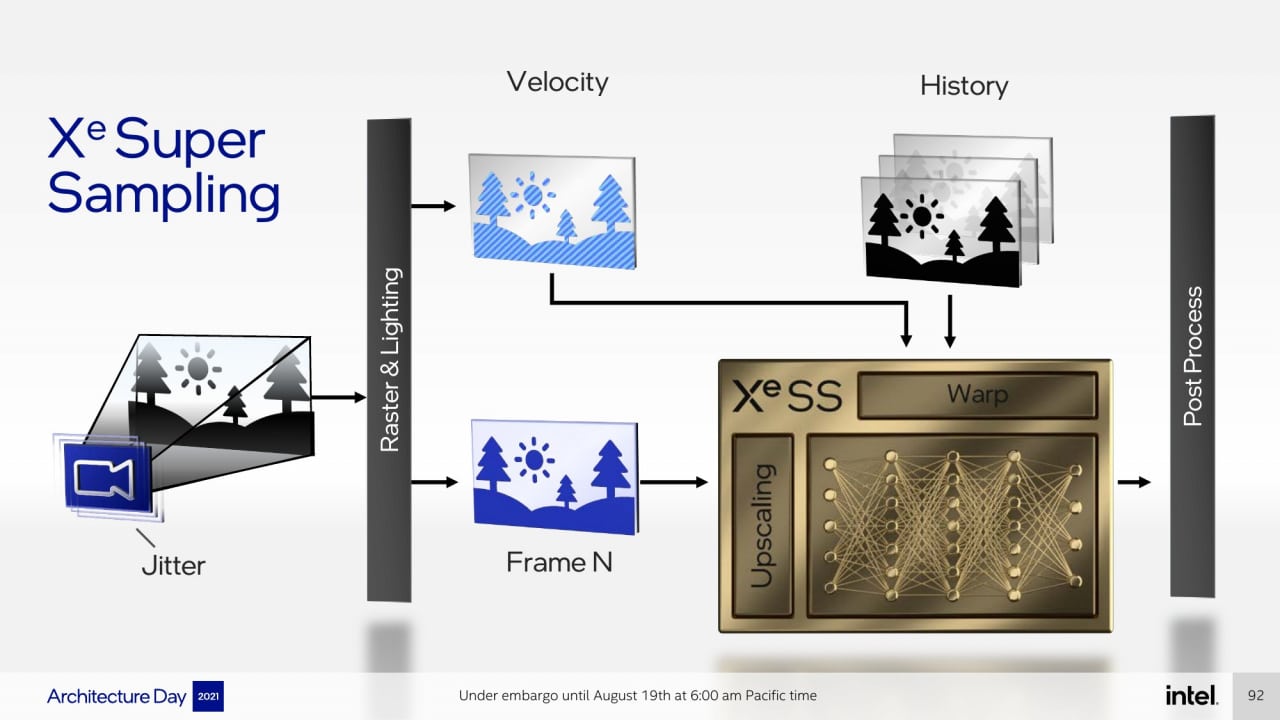Upscaling algorithms have been high on the agenda thanks to Nvidia’s Deep-Learning Super Sampling (DLSS) and AMD’s FX Super Resolution (FSR). Both techniques enable scaling from lower resolutions to a higher target resolution as a way to improve performance. While Nvidia uses temporal information from adjacent frames, motion vectors and machine learning, AMD has opted for a simpler, more traditional method.
The advantage of AMD’s solution FSR is that it is easy to implement and does not require specific hardware resources to operate. Nvidia’s DLSS, on the other hand, uses the Tensor cores that modern Geforce graphics cards are equipped with and also places higher demands on the implementation on the part of game developers.
With Intel’s upcoming graphics card Arc, the company enters the game with upscaling. Judging by their first demonstration, the method appears to be significantly more closely related to DLSS than it is to FSR. With the help of hardware-accelerated AI, temporal information and motion vectors, Xe Super Sampling (XESS) will scale up games to higher resolutions with good image quality and with very low performance impact.
Intel will deliver two different methods of machine learning based super sampling. At launch, Intel will use something called XMX. Another alternative should be offered in the form of machine learning algorithms written with DP4a instructions. Without all the details in hand, it looks like the XMX version will offer high performance, but be limited to Intel’s Xe architecture in the Arc graphics cards. The second version should work with all hardware whose cores support DP4a instructions.
In Nvidia’s case, it means graphics cards from the Geforce GTX 1000 series or later, and in AMD’s case, support should be available from the first Radeon RX Vega graphics cards. For Intel’s own part, the entire Xe series should also support the feature. In other words, this is an indication that the faster XMX variant requires hardware resources that are exclusive to Xe-HPG and thus do not work on Xe-LP, which is the architecture integrated into processors.
Judging by Intel’s presentation, the DP4a variant looks to perform half as well as the XMX variant in terms of the upscaling process. Intel announces that development tools for game developers will be available as early as August, but only with XMX-based acceleration. Later this year, the developer tools with support for DP4a will be released.















